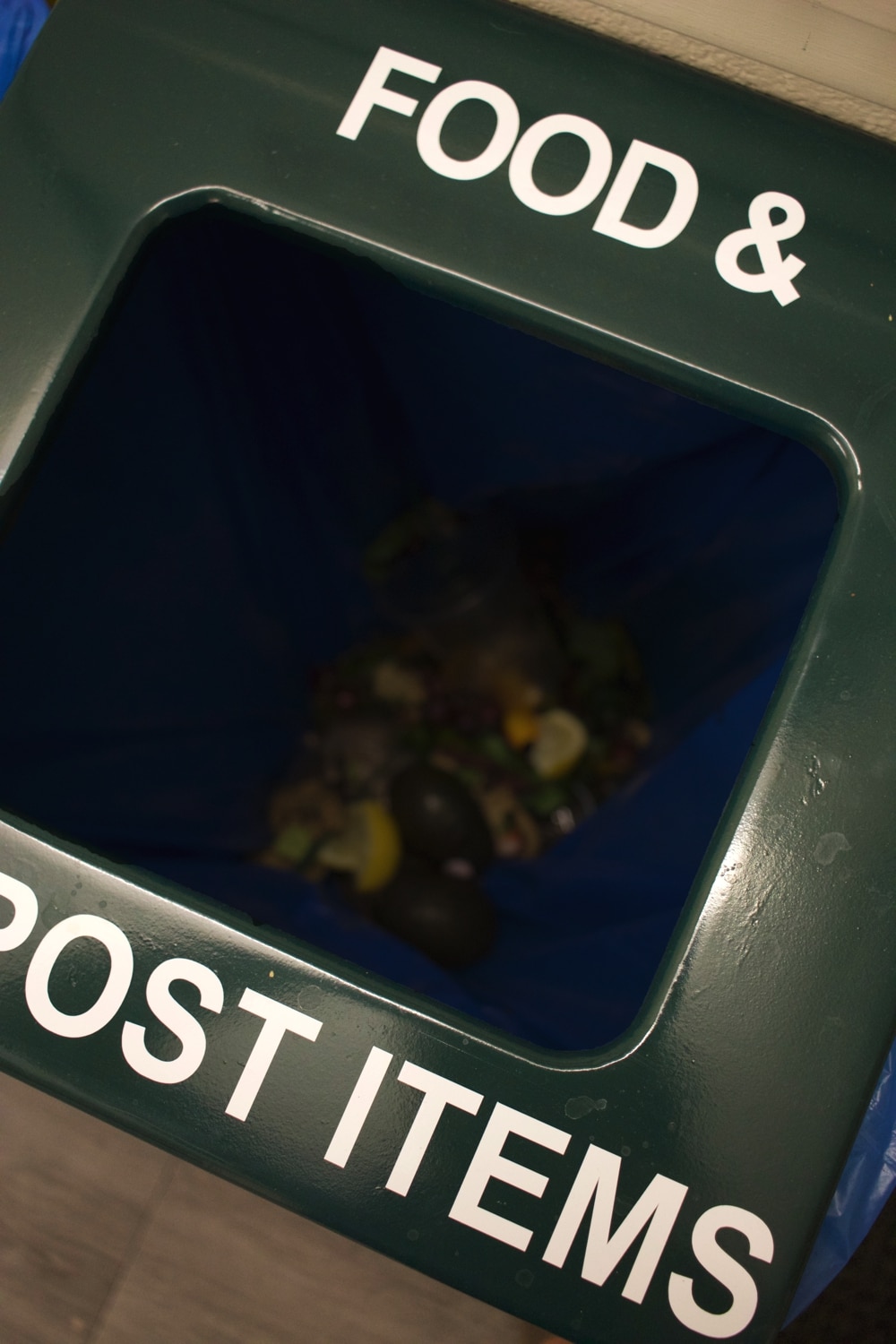
Braun residents introduced three compost bins to their residence hall Feb. 28 with the help of Sustainability Coordinator Jenny Low. The bins, emptied every other day by resident volunteers, are the most recent additions to other compost bins on campus. The 10 other bins — for a total of 13 on campus by Low’s count — are located in heavily frequented areas such as the academic commons and the Tiger Cooler. As of now, Braun is the only residence hall with its own compost program, according to Low.
Catherine Lee (first year), one of the compost captains, co-manages compost on the third floor.
“Occidental has such an emphasis on sustainability and caring about the environment, and students are so engaged in efforts toward that,” Lee said. “I feel like it’s very fitting that we have compost that is in line with what Occidental stands for.”
The student initiative, spearheaded by Stella Ramos* (first year), arose from frustrations she shared with other Braun residents regarding the lack of composting options in residence halls. Ramos hails from Seattle, where compost is regulated by the city, and said was taken aback by the lack of compost bins on Occidental’s campus.

While Ramos said that she appreciates the Tiger Cooler’s and the Green Bean’s efforts to provide compostable materials, she was troubled by the lack of proper disposal sites for compostable goods in residence halls.
“I was just kind of like, personally in pain every time I would throw food in the trash,” Ramos said. “It would just hurt a little bit.”
Ramos made it her goal to get compost bins in Braun, working throughout winter break to contact people on campus with compost expertise. She emailed Liz Richman (junior), who is involved with the Cooler’s compost initiative, and also got in contact with Low, who oversees student sustainability efforts on campus.
As part of the Fall 2016 initiative to introduce compost bins in locations such as the Johnson Student Center and Johnson Hall, Low, Richman and other students involved with the initiative decided to place a compost bin near the main entrance of Newcomb Hall. They eventually removed the bin in Newcomb due to lack of use.
“I think we gave it a semester before we decided to remove it,” Low said. “It was getting like a few [Green Bean] cups for an entire week.”
Richman attributes the failure of the Newcomb compost bin to the lack of involvement by Newcomb residents in its implementation. She is more optimistic about the success of Ramos’ system, in which five Braun resident volunteers known as “compost captains” coordinate other resident volunteers in routinely emptying the compost bins.
“All the compost on campus besides the Marketplace is student-run, so it’s like students who do it, students who are involved,” Richman said. “So I think the students who live in the dorm should be obviously involved in the compost to feel like it’s important to them.”
Low said that convenience also plays a significant role in whether or not a compost bin is used: if a compost bin is not accessible, students are more likely to throw compostable waste in the trash.
One solution, Low said, is to pair trash cans with recycling and compost bins, so students are forced to make a conscious decision about where to deposit their waste. According to Low, pairing bins in residence halls, however, interferes with the fire code. Low said one way to address that is to conduct intensive outreach with residents to inform them of the compost bins’ presence and what can and cannot be deposited in them.
Low praised the work Ramos did in preparation for the Braun compost initiative, including making Facebook posts and sending emails to assess residents’ interest. Ramos also organized a Feb. 25 waste audit sponsored by Residential Education and Housing Services to assess the existing waste in Braun.
Ten first-year students, including Ramos, attended the audit, where they sorted waste into piles of trash, recycling and compostable materials. According to a presentation Ramos compiled to document the event, they found that most compostable materials were being thrown in the trash.
Although Ramos received $175 from the ASOC Renewable Energy and Sustainability Fund for the project, she has not yet had to use any of it. Structural staff from Facilities made the bins for free, using scrap wood and leftover paint to construct the lids.
Since Braun is a first-year residence hall, there is no guarantee that the compost initiative will continue once Ramos and other volunteers move out. Ramos has met with Elizabeth Braxton, assistant director of residential education for the first-year experience, to discuss the future of the project. Braxton and Ramos agreed to market Braun to incoming first-year students with an interest in sustainability who could then continue the compost initiative.
“Stella and I were transparent with each other in that we don’t really know how this is going to go, but as long as we’re both on board for launching it and committed to its success this semester, I’m excited to see where it could go in the future,” Braxton said.
Ramos plans to introduce composting to whichever residence hall she lives in next year. She has already met with students from Erdman and Bell-Young to discuss how they might implement composting in their residence halls. Since she has already laid much of the groundwork and has built connections with custodial and facilities staff, Ramos said other students will be able to build upon the foundation she has set.
“Ultimately, having compost in every residence hall would be the ultimate goal for all of us that are involved in the project, and I think it’s way more attainable and accessible than people think,” Ramos said. “It just takes a couple of student leaders willing to head the project.”
*Stella Ramos is a staff writer for The Occidental.
![]()


































